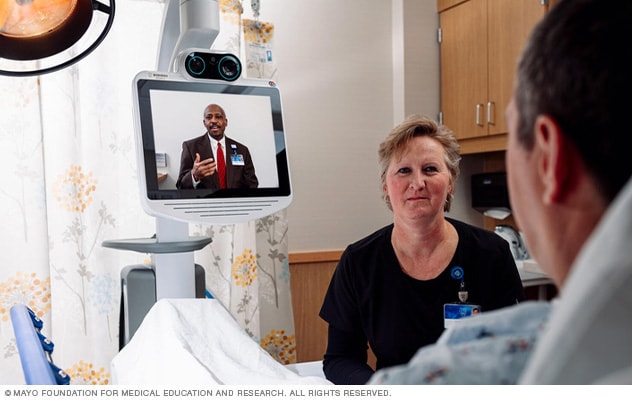The whole problem with telestroke is that it still depends on a subjective evaluation by a neurologist. We need to get to these much faster and objective diagnosis tools, but that would be a neurologist job killer which means it will never occur even if better for patients.
Hats off to Helmet of Hope - stroke diagnosis in 30 seconds
Microwave Imaging for Brain Stroke Detection and Monitoring using High Performance Computing in 94 seconds
New Device Quickly Assesses Brain Bleeding in Head Injuries - 5-10 minutes
The latest here:
Telestroke (stroke telemedicine)
Overview
In telestroke, also called stroke telemedicine, doctors who have advanced training in treating strokes can use technology to treat people who have had strokes in another location. These stroke experts work with the person's local emergency medicine doctors to recommend diagnosis and treatment that can be given in their own community.Doctors and patients communicate using digital video cameras, internet telecommunications, robotic telepresence, smartphones, tablets and other technology.
Stroke telemedicine operates on a distant site-and-originating site system. A large urban medical center, generally certified as a primary or comprehensive stroke center, usually serves as the primary medical center (the distant site). Remote locations, often smaller regional hospitals, serve as the originating site.
In telestroke, many people work together as a team, including a program manager, a clinical coordinator, vascular neurologists, neurosurgeons and radiologists at the distant site, and emergency medicine doctors and other staff at the originating site. Radiology technicians, informational technology staff, researchers, nurses, nurse practitioners and other staff also are important members of the stroke telemedicine team.
Why it's done
In stroke telemedicine, your doctor and the doctor trained in treating strokes at the distant site work together to provide care in your home community and try to avoid the need for transfer to another medical center. This often allows you to receive quality stroke care in your community.Many regional hospitals don't have neurologists on call to recommend the most appropriate stroke care. In stroke telemedicine, a stroke expert at the distant site consults with doctors and people who've had acute strokes at the originating remote site.
Getting a prompt diagnosis and an appropriate treatment recommendation increases the chances that clot-dissolving therapies (thrombolytics) can be delivered in time to reduce stroke-related disability.
To be effective,(Bullshit, you don't know how fast it needs to be delivered to effectively get 100% recovery.) intravenously delivered clot-dissolving therapies must be given within four and a half hours after you experience stroke symptoms. Procedures to dissolve clots may be considered within 24 hours of stroke symptoms, but these require transferring from the originating to the distant site.
What you can expect
 Telestroke consultation
Your doctor performs a live, real-time consultation with video and sound with the doctor at the distant hospital.
Telestroke consultation
Your doctor performs a live, real-time consultation with video and sound with the doctor at the distant hospital.After you have a CT scan at the originating hospital, the stroke expert at the distant site performs a live, real-time consultation with video and sound — so you can see, hear and speak with the doctor. The stroke specialist may discuss your medical history and review your test results.
The stroke specialist evaluates you, works with your doctor to determine the most appropriate treatment and sends the treatment recommendation electronically to the originating hospital.
No comments:
Post a Comment